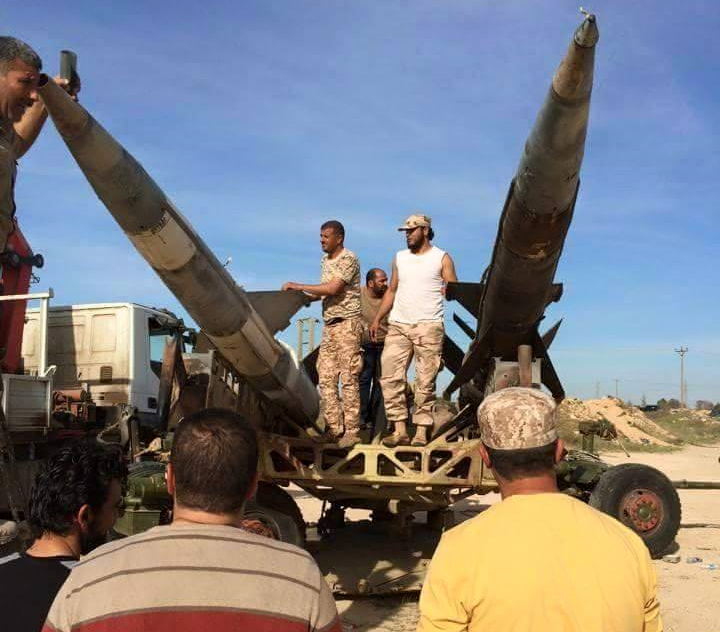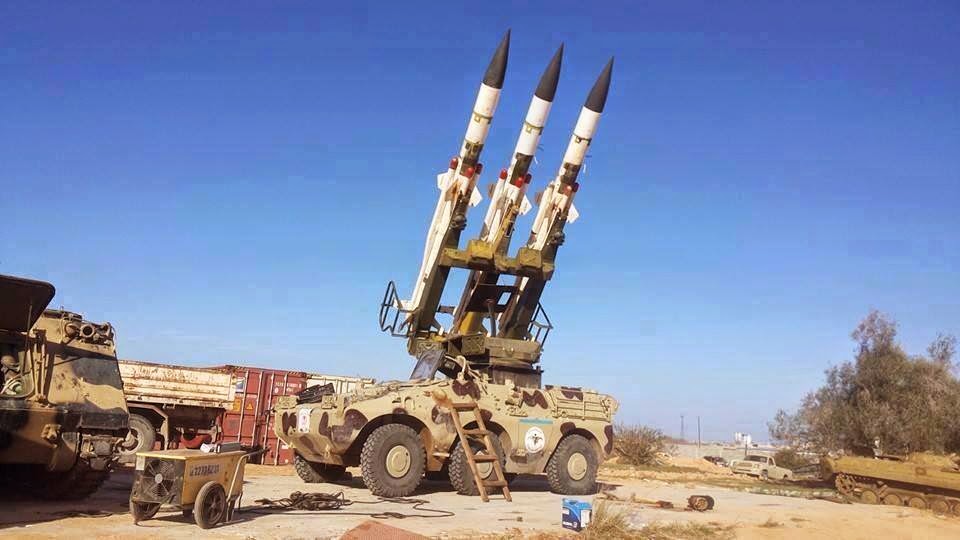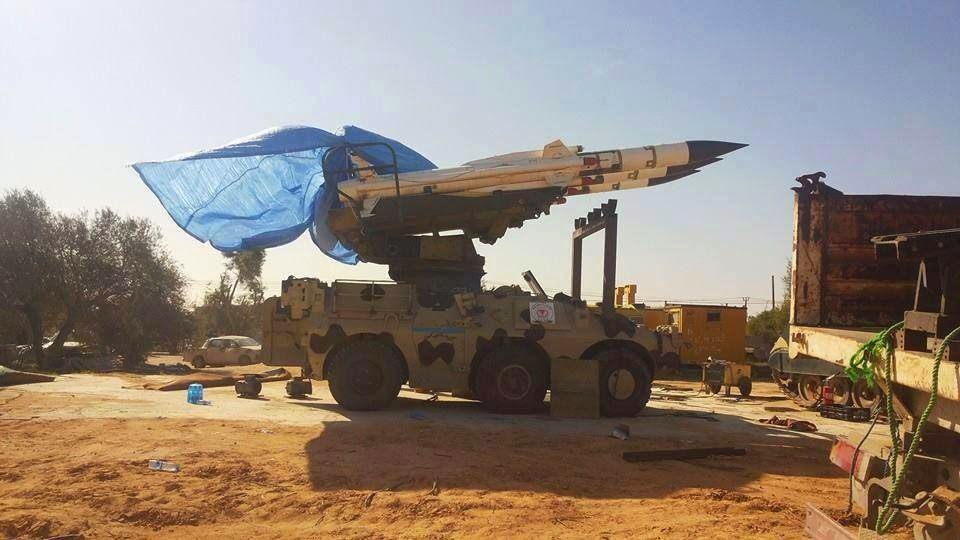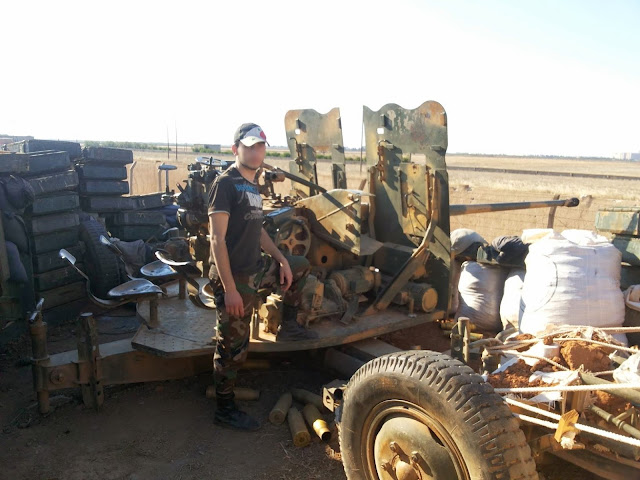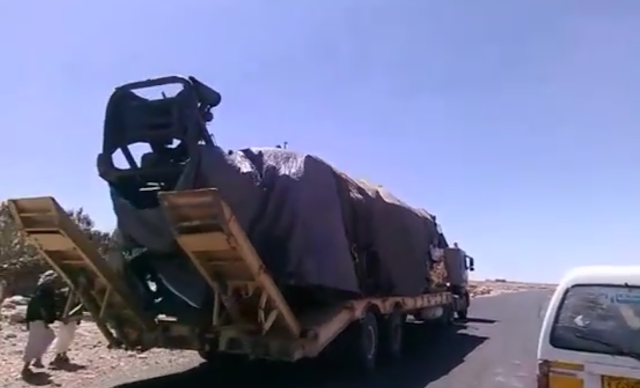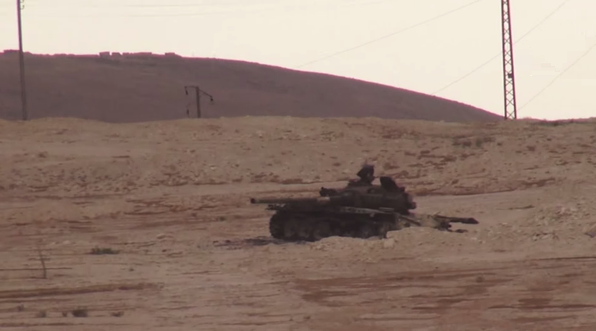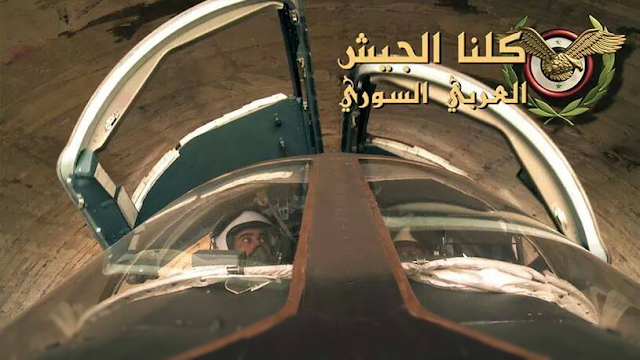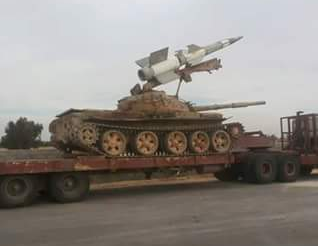![]()
The Islamic State's offensive in Central Syria has not only allowed the fighters of the Islamic State to expand their operations into areas previously out of reach, but it now also threatens the regime's gas supplies, its presence on numerous fronts, its control over the only road leading to the vitally important T4 airbase and the airbase itself, the largest of its kind in Syria.
T4, sharing its name with the nearby pumping station, is more commonly (yet incorrectly) known as Tiyas and a whole host of other names. After the fall of Tadmur airbase, it is now one of sixteen operational airbases under control of the Syrian Arab Air Force (SyAAF), and its defence is essential to the SyAAF's ability to exercise control over the Syrian skies. No less than three fighter-bomber squadrons and one helicopter squadron are currently operating out of T4, including the pride of the SyAAF: its Su-24M2s. The airbase is also home to the now decommissioned MiG-25 fleet, largely phased out in the previous decade. Despite being Syria's largest airbase, T4 only has one runway, making the airbase extremely vulnerable in case this single runway gets taken out.
In anticipation of an Islamic State offensive on T4 after their lightning advance throughout Central and Eastern Syria in mid and late 2014, the airbase's assets were heavily reinforced by a temporarily detachment of L-39s, formerly deployed to the then recently overrun Tabqa airbase and by one detachment of at least four Mi-8/17s.
Fully aware of the high military value of T4, the regime has made extensive efforts to defend the airbase, making it come close to being an impenetrable fortress. 'Fortress T4' also serves as a barrier between the now Islamic State controlled Tadmur, and regime controlled Homs, further adding to its importance. The regime forces defending T4 have clashed with the fighters of the Islamic State on numerous occasions throughout the past year, with the latest offensive coming close to the
officer's housing and
T4 pumping station. According to various reports by Islamic State related Twitter accounts, T4 was targeted with artillery in late May 2015, although it remains unknown if this caused any damage to the airbase.
While the airbase itself is not in imminent danger of falling to the fighters of the Islamic State, the control over the only road leading to T4 is disputed, and will likely completely be under the control of the Islamic State if they continue their push towards Homs. This would isolate T4 and make access by road impossible, leading to significant problems in the long run. Resupplying the airbase would then be in the hands of the SyAAF's transport aircraft and helicopters, but such an airlift would have serious drawbacks as it would be unable to bring in any heavy weaponry and fuel, not to mention the fact that it would also cost the regime loads of precious resources.
![]()
The resident fleet of aircraft and helicopters has the potential of being a major eyesore to the fighters of the Islamic State, and has the ability to thwart the Islamic State in any of its future offensives undertaken in the Homs Governorate. But as the SyAAF remains largely unable to respond to actual developments, and often only joins the fray after the battle on the ground has been fought, better coordination between regime forces on the ground and SyAAF aircraft and helicopters in the sky is required to fully optimise the assests available at T4. Furthermore, the desperate revenge strikes flown by the SyAAF on recently lost towns could be stopped to spare not only the life of the many innocent civilians killed during these sorties, but also the precious airframes used in these useless sorties, with the wasted flight-hours instead allocated to supporting the regime's ground forces.
For example, only one symbolic sortie from T4 was flown in aid of the defenders of Hulayhilah, while the defenders of al-Sukhna, al-Hail, Arak and the numerous other towns and gasfields recently captured by the fighters of the Islamic State received no aerial support whatsoever. The SyAAF also largely stood by when Tadmur was captured, only flying some aimless sorties to boost moral of the regime forces on the ground. The town was heavily hit only after it was captured by the Islamic State, with the ordnance used randomly dropped on residential areas.
The huge weapons depots and airbase present at Tadmur provided the fighters of the Islamic State with large amounts of weaponry and associated ammunition, a logical target for the SyAAF's fighter-bombers, which can be equipped with sophisticated precision guided weaponry. However, none of the depots were targeted by the SyAAF, and it was the US-led coalition that had to step in to destroy six anti-aircraft guns captured at Tadmur.
[1] This while the majority of the aircraft capable of deploying precision guided munitions is stationed at T4, located only sixty kilometers from Tadmur.
While extensive in terms of types, Syria's numerically limited stock of precision guided missiles has seen little use throughout the Civil War, making it likely that the majority is still being withheld for a possible future conflict with the U.S. or Israel. But as the war has now entered its fourth year, one would question if such weaponry wouldn't be better off used in this conflict instead. While the SyAAF's current arsenal of precision guided weaponry would be quickly depleted, it could be quickly replenished by Russia; the continuous flow of Russian-made weaponry that reaches Syria on a regular basis is a testament to that fact.
![]()
When examining T4 using the latest (public) satellite imagery
available one can spot a large number of seemingly inoperational aircraft spread around the airbase, with as much as thirty-two decommissioned MiG-25s visible at T4 in October 2014. While certainly an impressive sight, it marks the end of an era for the once mighty 'Foxbat' fleet. The fleet of MiG-25s was slowly decommissioned throughout the previous decade, with only a few examples remaining operational by the turn of the century.
The exact number of MiG-25s Syria received is thought to be around forty. Versions are believed to include MiG-25P (later upgraded to MiG-25PDS) and MiG-25PD interceptors, MiG-25R and RB reconnaissance aircraft and MiG-25PU conversion trainers. A reason for the retirement of the MiG-25 fleet might not only be its age and the increasing costs to keep the aircraft operational that come with it, but also the type's vulnerability to Israeli jamming.
The career of some MiG-25s appeared to have been
revived on several occasions throughout the Syrian Civil War; the last confirmed sorties were flown in March and April 2014, during which a MiG-25PD(S) launched R-40 air-to-air missiles at ground targets. These sorties, to no one's surprise, yielded no beneficial results.
The last to operate the MiG-25s was an unknown squadron at Tadmur, sporting three MiG-25PD(S) and one MiG-25PU in its ranks until late 2013. These aircraft were then likely flown to T4, where they joined the remainder of the MiG-25 fleet already stored here.
![]()
The majority of the active aircraft operating out of T4 are housed in the airbase's fifty-eight Hardened Aircraft Shelters (HAS), including the SyAAF's Su-24M2s. T4 has traditionally been the home of Syria's Su-24s, with most located in the South-Eastern part of the airbase. A few examples are also detached to
Seen at any given time. The Su-24s are undoubtedly the most important assets of the SyAAF, and have seen heavy usage in the past four years.
Although T4 is located closely to Islamic State held territory, 819 Squadron flying the Su-24s rarely participates in sorties flown against the fighters of the Islamic State. Instead, the Su-24 serves as the SyAAF's long arm, mostly striking villages throughout all of Syria. From Deir ez-Zor to Quneitra and even testing the reaction time of the Royal Air Force based at Akrotiri, Cyprus, the Su-24s done it all.
Contrary to earlier reports, the transfer of one Su-24MK and one Su-24MR by Libya to Syria in the mid 1990s might have not taken place, and has been disclaimed by several SyAAF pilots and the former base commander of T4. This means that the number of Su-24s Syria received stands at just twenty.
However, nineteen of these Su-24MKs were upgraded to M2 standard by the 514 ARZ Aircraft Repair Plant in Rzhev in Russia between 2010 and 2013. Just in time to participate in the Civil War, all aircraft returned to Syria relatively unnoticed. ![]()
![]() The upgrade provides for improved targeting, navigation and fire control systems by replacing the plane's old control systems. The plane is also made compatible with newer versions of the KAB-500/1500 and with Kh-31As, Kh-31Ps, Kh-59s and R-73s, adding to theFAB, OFAB and RBK bombs, Kh-25s, Kh-28s, Kh-29Ls, Kh-29Ts and Kh-58s guided missiles, KAB-500s and KAB-1500s guided bombs, S-24 and S-25 air to ground rockets, rocket pods and R-60 air-to-air missiles it can already carry. In Syrian service, all but the R-73 are available to the Su-24M2s, which are reserved for the SyAAF's MiG-29SMs instead.
The upgrade provides for improved targeting, navigation and fire control systems by replacing the plane's old control systems. The plane is also made compatible with newer versions of the KAB-500/1500 and with Kh-31As, Kh-31Ps, Kh-59s and R-73s, adding to theFAB, OFAB and RBK bombs, Kh-25s, Kh-28s, Kh-29Ls, Kh-29Ts and Kh-58s guided missiles, KAB-500s and KAB-1500s guided bombs, S-24 and S-25 air to ground rockets, rocket pods and R-60 air-to-air missiles it can already carry. In Syrian service, all but the R-73 are available to the Su-24M2s, which are reserved for the SyAAF's MiG-29SMs instead.![]()
![]()
Out of the twenty Su-24s originally acquired by the SyAAF, eleven examples remain operational as of June 2015. All but one loss incurred during the Civil War, with one airframe damaged beyond repair after suffering an accident before it had commenced. One was shot down with a MANPADS by the Free Syrian Army above Daret Izzah on the 28th of November 2012, another was shot down by an Israeli Patriot surface-to-air missile (SAM) after having strayed into the airspace over the occupied Golan Heights on the 23th of September 2014 and another fell near Nahtah on the 11th of June 2015, likely due to premature detonation of its ordnance. One Su-24M2 was heavily damaged by anti-aircraft fire in May 2015, after which its pilot managed to guide the airframe to T4 despite the condition it was in. However, it crashed while on approach to the runway after it became apparent that the damage done to the aircraft would prevent a safe landing. Both the pilot and navigator ejected safely. An additional two Su-24s were believed to have been destroyed in an accident on the 28th of May 2015, during which an explosion occured while both aircraft were being rearmed for another sortie, resulting in the death of at least five and wounding another dozen. Additionally, two Su-24s are out of service after having been hit by ground fire. While the damage on both of these aircraft is minimal and can be repaired, the SyAAF currently lacks the resources to do so. The fleet of available airframes has thus almost been cut in half, and each loss is a heavy blow to the SyAAF.
![]()
![]()
A second fighter-bomber squadron based at T4 operates the Su-22M4, all of which are located in the North-Western and South-Western part of the airbase. 827 Squadron has seen heavy use against the fighters of the Islamic State in the past year, mainly flying in support of Suqour al-Sahraa' (Desert Falcons) units patrolling the Syrian desert.
The Su-22M4 is outfitted for the carriage of S-24 and S-25 air-to-ground rockets, unguided rocket pods, FAB, OFAB and RBK bombs, KMGU-2 munitions dispensers, Kh-25, Kh-28, Kh-29L, Kh-29T and Kh-58 air-to-ground missiles and R-60 air-to-air missiles. The Su-22M4 has almost exclusively been used to deliver unguided weaponry in the Syrian Civil War: its potential to deliver guided weaponry again being ignored.
Although its Su-22s are often targeted by anti-aircraft guns of the Islamic State, 827 Squadron has suffered relatively light losses in the past four years, with only one Su-22M4 shot down by the fighters of the Islamic State near the Shaer gas field on the 30th of November 2014. As seen with the Su-24M2s, a couple of airframes are awaiting repair after having suffered some form of combat damage.
In the mid to end of 2014, T4's aerial assests were further strengthened by the deployment of a detachment of L-39s. Although nowadays rarely sighted in Syria's skies, the remainder of the SyAAF's L-39 fleet remains active on nearly every front, the L-39ZOs and L-39ZAs almost exclusively flying their sorties in the night in the Aleppo and Damascus region.
The L-39s based at T4 were among the examples overhauled at 'The Factory', the SyAAF's repair and maintenance center located at Neyrab/Aleppo International Airport. The overhauled examples were distributed between Syria's remaining operational airbases, including Tabqa before it fell to the fighters of the Islamic State on the 24th of August 2014. The L-39s now present at T4 are believed to have been formerly based at Tabqa. These aircraft have thus followed the fighters of the Islamic State as they carried out their offensives in Syria.
In an effort to boost the firepower of the L-39s, all of the overhauled airframes were rewired for the carriage of 80mm B-8 rocket pods, a weapon originally not destined to be used on the L-39. A B-8 equipped L-39ZO now stationed at T4 airbase can be seen below. The carriage of B-8 rocket pods greatly enchances the L-39's capabilities, which previously could only be armed with 57mm rocket pods and bombs.
Recent satellite imagery of T4 shows the presence of at least five L-39s at any given time, most sitting on the tarmac formerly used by the SyAAF's MiG-25s or by the double HAS, now acting as a support facility for the L-39s.
![]()
A detachment of Mi-8/17s now based at T4 act in support of the remaining regime forces in the region, and as a liaison between the airbase and the rest of regime-controlled Syria.
![]()
Four Mi-8/17s can be spotted on recent satellite imagery, stationed right next to the L-39s.
Many of the HAS's now empty after the decommissioning of the MiG-25 fleet have been turned into barracks, weapon depots and defensive strongholds. Two HAS's
located on the North-Eastern side of the airbase and one HAS
located on the South-Eastern part of the airbase have seen specifically much activity around them, with several trucks present in or near the HAS's at any given time.
![]()
A tank company, now
stationed in the centre of T4, further strengthens the airbase's defences.
Satellite imagery also shows the many destroyed buildings in the officer's housing quarters
located East of the airbase. This location was the scene of heavy fighting back in November 2014, which also spread to the
nearby T4 pumping station. The defenders succesfully managed to push the fighters of the Islamic State back from both locations however.
Russian contractors from the Slavonic Corps, sent to protect the oilfields around Deir ez-Zor, also passed by T4 on their journey to the city. The contractors, apparantly spending more time posing for photos than actually fighting, were routed after being ambushed by rebel forces near the town of al-Sukhna on the way to Deir ez-Zor, and swiftly returned to Russia afterwards, where the owners of the Slavonic Corps was subsequently imprisoned by the Federal Security Service (FSB) because the operation was deemed illegal by the Russian government. Five contractors together with Su-24M2 '2514' can be seen below.
![]()
The two S-75 and three S-125 surface-to-air missile (SAM) sites surrounding the airbase remain active, and regularly change positions to throw off their adversaries. Although they are unlikely to be of much use during a potential Coalition air campaign against the Assad-regime due to their outdated nature, they would force the flight ceiling of coalition aircraft up in the early stages of such a campaign and might deter stand-alone strikes by other parties. The systems tasked with directing these SAMs to their targets are two P-18 ''Spoon Rest D'' and two P-35/37 ''Bar Lock'' radars, which are responsible for detecting any plane flying in this part of Central Syria, a crucial task now that Tadmur airbase and its many radars have been captured by the Islamic State. One RSP-7 radar and one Parol Identification friend or foe (IFF) system also present at T4 guide the aircraft that are coming in to land.
![]()
The latest offensive of the Islamic State on this vital airbase has once again been stopped before reaching the airbase, and with the recent setbacks for the Islamic State, this might have been their last chance to take it. Fortress T4, as large as it is important, will indubitably continue to serve as a major hub for the Syrian Arab Air Force.
![]()
Written in collaboration with R.S from
Luftwaffe A.S. Satellite imagery by
finriswolf.
Recommended ArticlesThe Syrian Arab Air Force, beware of its wings














